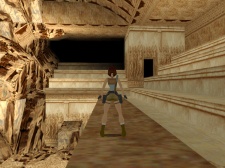Difference between revisions of "Colosseum"
| Line 48: | Line 48: | ||
== Notes == | == Notes == | ||
| − | The name | + | The name 'Colosseum' strictly refers to the Flavian Amphitheatre in Rome. Nearby the apmhitheatre was a Colossus, or enormous statue, of the Emperor Nero, and it has long been believed that the Colosseum gained its name from its proximity to this statue. |
| + | |||
| + | Amphitheatres were common in classical times, being particularly associated with the Romans. They are most commonly associated with Gladiator fights, but were used for many forms of public entertainment. They have been found in France, Turkey, Greece, Italy, Spain and Northern Africa. | ||
Revision as of 13:00, 30 March 2007
| Template:Levelline|Colosseum | ||
|---|---|---|

| ||
| Template:Levelline|Tomb Raider | ||
| Level No | 6 | |
| Secrets | 3 | |
| Length | 40 minutes | |
| Location | Turkey | |
| Template:Levelline|Level Chronology | ||
| St. Francis' Folly | Colosseum | Palace Midas |
| Template:Levelline|Walkthrough | ||
This article describes the Colosseum from Tomb Raider. If you are looking for the one in Tomb Raider Chronicles, look here: The Colosseum.
Colosseum is the sixth level in the original Tomb Raider. If you are searching for the Chronicles level, go to The Colosseum.
Through exploration of this ruined amphitheatre, Lara makes her way to the VIP seating area where she finds the entrance to Palace Midas.
In the Colosseum you will meet lions, crocodiles and gorillas.
Objectives
- Enter the main arena
- Find the Rusty Key
- Use the key in the Royal Box to gain access to Palace Midas
Notes
The name 'Colosseum' strictly refers to the Flavian Amphitheatre in Rome. Nearby the apmhitheatre was a Colossus, or enormous statue, of the Emperor Nero, and it has long been believed that the Colosseum gained its name from its proximity to this statue.
Amphitheatres were common in classical times, being particularly associated with the Romans. They are most commonly associated with Gladiator fights, but were used for many forms of public entertainment. They have been found in France, Turkey, Greece, Italy, Spain and Northern Africa.
Enemies